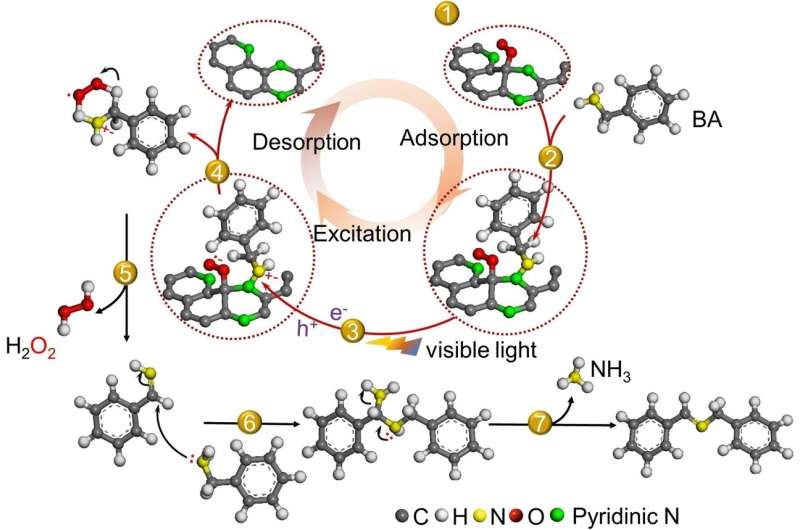This article has been reviewed according to Science X's editorial process and policies. Editors have highlighted the following attributes while ensuring the content's credibility:
fact-checked
peer-reviewed publication
trusted source
proofread
New findings shed light on the chemical evolution of the Earth

The sun as a source of energy, and catalysts to accelerate chemical reactions, were of critical importance in the emergence of the first biochemical molecules on Earth. A research team has now shown that a solid deposited from ammonia and methane plasma is capable of using light energy for amine-to-imine conversions. This process might have played an important role in the creation of the first biomolecules. The study has been published in the journal Angewandte Chemie.
Between three and four billion years ago, on primordial Earth, the first biomolecules were being formed prior to an explosion of life. These early chemical reactions, however, required catalysts. Xinchen Wang and a team of researchers from Fuzhou University in China have discovered that the primordial atmosphere itself could have served as a source for these catalysts.
Using methane and ammonia gases, which were most likely present in the hot gas mixture shrouding the world in the Archean age, the team used chemical vapor deposition to produce nitrogenous carbon compounds as possible catalysts. They found that, in a reaction chamber, molecules condensed out of an ammonia and methane plasma onto a surface, quickly growing to form a solid nitrogenous carbon polymer similar to nitrogen-doped graphite.
As the team observed, the irregularly incorporated nitrogen atoms gave this polymer catalytically active sites and an electron structure that enabled it to be excited by light. The researchers then turned to proving the extent to which the substance could reduce or oxidize other substances under the effect of light.
One of the most significant reactions on early Earth may have been imine formation. Imines, also referred to as Schiff bases, are a dehydrogenated form of amines, compounds composed of carbon, nitrogen, and hydrogen. Many chemists assume that, on primordial Earth, imines may have served in the formation of the first hereditary molecules of ribonucleic acid (RNA). Wang and his team could show that their plasma-generated catalyst can convert amines to imines using nothing other than sunlight.
The team says that carbon nitride-based photocatalysts, such as the plasma-generated substance, could have lasted for millions of years and produced important chemical intermediates. In addition, they could also have served as a source of carbon- and nitrogen-containing compounds. By demonstrating that it is possible to produce such a catalyst using only the gases and conditions present in the atmosphere of early Earth, the study sheds new light on the possible evolutionary path taken by biomolecules.
More information: Yan Wang et al, Plasma‐Enhanced Chemical‐Vapor‐Deposition Synthesis of Photoredox‐Active Nitrogen‐Doped Carbon from NH3 and CH4 Gases, Angewandte Chemie International Edition (2023). DOI: 10.1002/anie.202307236
Journal information: Angewandte Chemie , Angewandte Chemie International Edition
Provided by Wiley





















